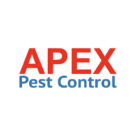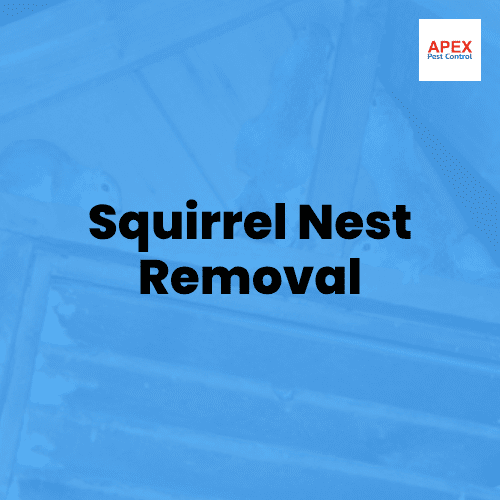Squirrel Nest Removal: Safeguard Your UK Property
With 2.7 million grey squirrels in the UK, outnumbering native red squirrels (140,000, per Wildlife Trusts) since their 19th-century North American introduction, these invasive rodents wreak havoc. Grey squirrels build nests—dreys—in lofts, chimneys, wall cavities, and garden structures, exploiting warmth and shelter.
Their nests cause structural damage, gnawed wiring, and contamination from droppings, while outdoor dreys disrupt bird populations. Effective squirrel nest removal protects your property, curbs ecological harm, and supports red squirrel recovery. Here’s how UK homeowners and property managers can tackle squirrel nest removal.
Discover how to detect and address squirrel infestations with our expert guide to Squirrel Infestation Signs, covering key indicators, daily activity patterns, and warning clues inside and outside your home.
Recognising Squirrel Infestation Signs
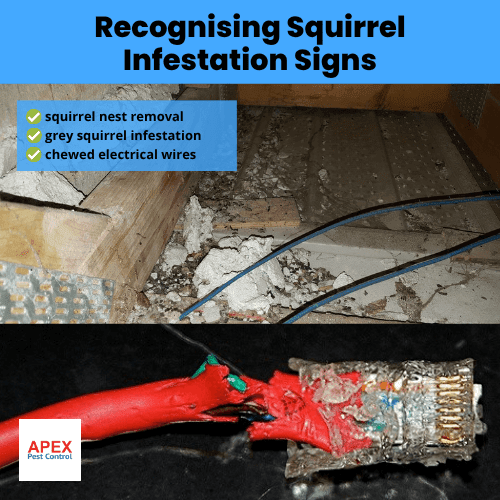
Noises in Walls or Ceilings
Daytime scratching, scurrying, or rolling sounds in attics or walls signal squirrel activity. Diurnal grey squirrels are active at sunrise and sunset, unlike nocturnal mice or rats.
Droppings, Damage, and Nesting Materials
Look for ⅜-inch barrel-shaped droppings near attic entry points, chewed wires, shredded insulation, or gnawed beams. Nesting materials—twigs, leaves, debris—pile between joists.
Outdoor Nest Clusters
Dreys—compact stick structures lined with grass or fabric—near trees, bird feeders, or eaves often signal indoor nesting.
Raiding Food Sources
Empty bird feeders or licked-clean pet bowls outdoors indicate squirrels, especially in winter or spring when food is scarce.
Daylight Activity Patterns
Squirrels entering or exiting vents, chimneys, or soffits during dawn or dusk confirm nesting, aligning with their food-gathering cycles.
Where Squirrels Nest?
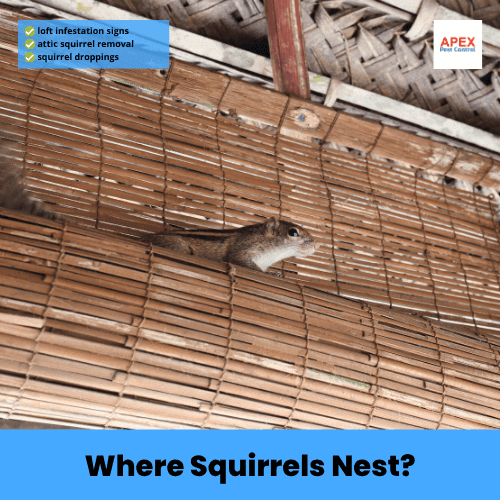
Common Nest Locations
Grey and red squirrels target:
- Attics: Warm, safe, accessed via damaged roof lines or vents.
- Soffits/Fascia: Chewed wood creates entry to wall cavities.
- Chimneys: Uncapped flues mimic hollow trees.
- Roof Eaves: Quiet corners for dreys.
- Trees: Oaks or maples near homes enable roof access.
Entry Point Indicators
Inspect for:
- Teeth marks on soffits.
- Loose vent covers.
- Nesting debris in gaps.
- Grease stains from fur oils.
Landscaping Clues
Check within 10 feet of your home:
- Overhanging branches for 8–10-foot leaps.
- Trellises or vines as climbing routes.
- Stripped bark or twig piles.
Health and Safety Risks
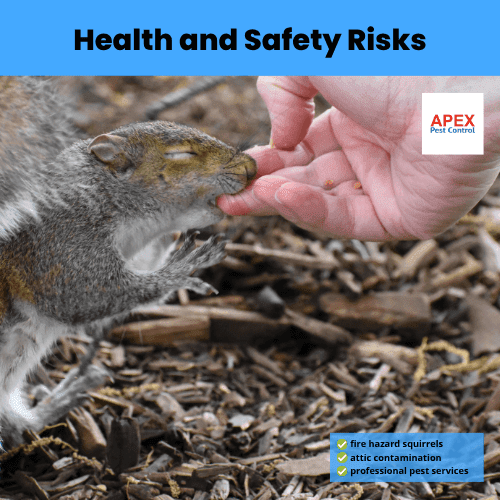
Fire Hazards
Squirrels gnaw wiring, risking short circuits. Electrical failures caused 13% of home fires (2015–2019, NFPA).
Contamination and Parasites
Droppings and urine in attics create ammonia odours and microbial growth. Fleas, ticks, and mites transfer to pets or humans, causing dermatitis or respiratory issues.
Disease Transmission
Droppings carry Salmonella, leptospirosis, and tularaemia (CDC). Pets or humans risk infection via contaminated dust.
Nursing Female Aggression
Territorial mothers may bite or scratch if nests with young are disturbed, increasing disease risks.
Property and Wildlife Impacts
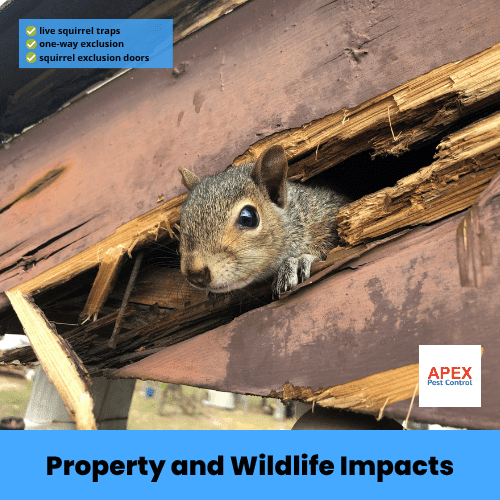
Structural Damage
Grey squirrels (Sciurus carolinensis) chew roofing, beams, and insulation, causing heat loss and weakening structures. Damages average $2,000 per incident (University of Nebraska-Lincoln).
Red Squirrel Displacement
Greys outcompete red squirrels (Sciurus vulgaris), carrying squirrelpox, fatal to reds. Red populations have dropped 90% since grey introduction (Natural England, 2020).
Birdlife Disruption
Squirrels raid feeders and nests, reducing local bird biodiversity.
Overpopulation Effects
Dense populations deplete resources, increase aggression, and spread parasites, per Toronto and Atlanta surveys.
UK Wildlife Laws for Squirrel Nest Removal
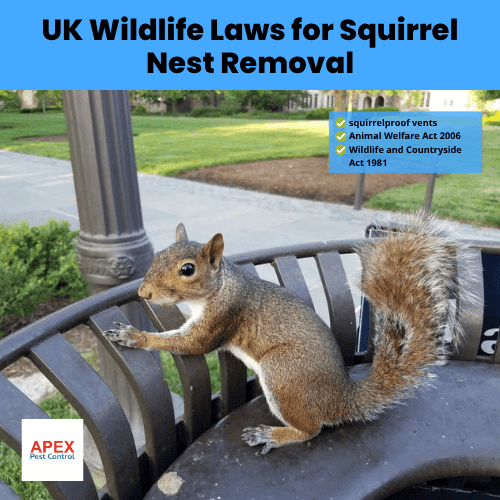
Grey vs. Red Squirrel Status
Grey squirrels, invasive under the Wildlife and Countryside Act 1981, cannot be released post-capture; humane dispatch is required. Red squirrels, protected under Schedule 5, cannot be harmed or their nests disturbed.
Animal Welfare
The Animal Welfare Act 2006 mandates humane treatment. Traps must avoid suffering, be checked daily, and follow the Pest Control Code of Best Practice. Snares and some poisons are banned.
Other Regulations
- Invasive Alien Species Order 2019: Prohibits grey squirrel release.
- General Licences (Natural England): Outline pest management rules.
- Wild Mammals Protection Act 1996: Bans cruelty to squirrels.
Humane Squirrel Nest Removal Methods
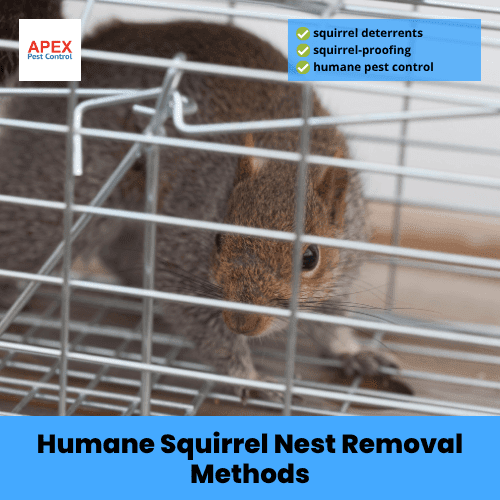
One-Way Exclusion Doors
Fits over vents or soffits, allowing squirrels to exit but not re-enter. Seal sites after 3–7 days.
Live-Capture Traps
Baited cages trap squirrels unharmed. UK law requires humane dispatch for greys unless licensed.
Noise and Light Deterrence
LED floodlights and talk radio prompt voluntary evacuation.
Non-Lethal Repellents
Capsaicin, peppermint oil, or predator urine deter nesting.
Timing Nest Removal
Optimal Periods
Remove nests in late summer (September) or early winter (December), avoiding breeding seasons (February–April, June–August) to prevent orphaning young.
Risks of Disturbing Active Nests
Removal during breeding may strand juveniles, trigger rebuilding, or provoke aggression.
Monitoring Breeding Cycles
Track chewing or nesting material movement to avoid active nests.
Professional vs. DIY Removal
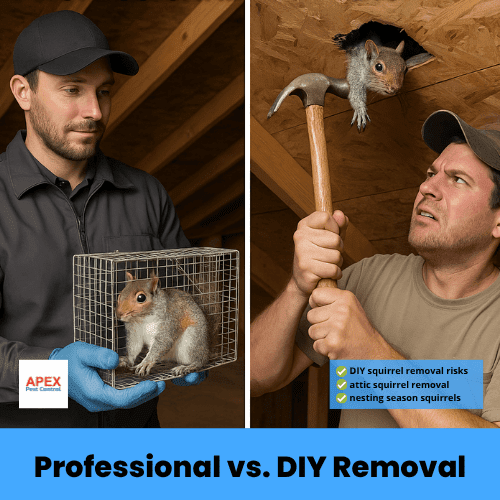
DIY Benefits
Saves costs and allows control over inspections and deterrents.
DIY Risks
Injury, incomplete removal, or trapped squirrels. May miss secondary nests or fail to sanitise.
Professional Advantages
Licensed experts use detection tools, ensure legal compliance, and prevent re-infestations.
When to Hire Experts
Call for hard-to-reach nests, persistent issues, or electrical damage.
Tools for Safe Nest Removal
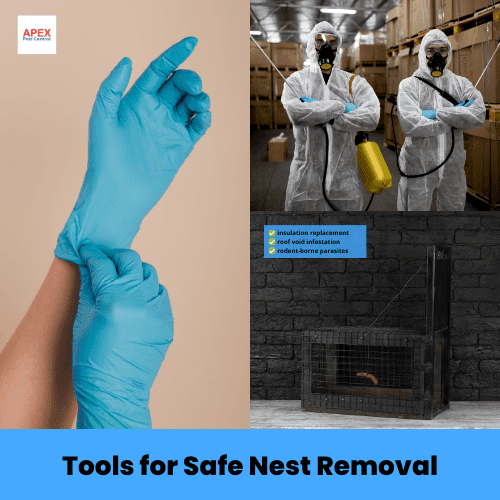
- Protective Gear: Gloves, N95 masks, coveralls.
- Access: Ladders, headlamps.
- Containment: Live traps, exclusion mesh.
- Cleaning: Disinfectants, rubbish bags, scrapers.
Cleaning and Sanitising
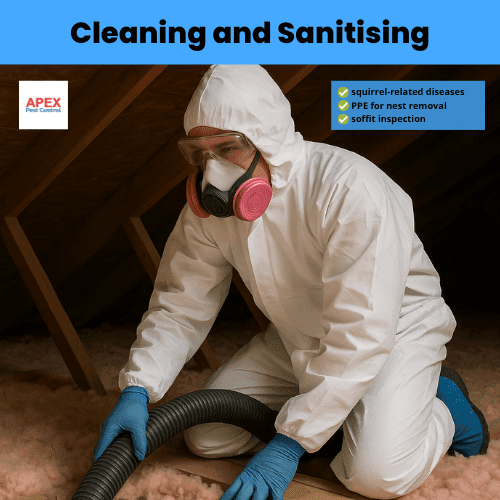
Ventilate
Open windows or use fans for 30–60 minutes.
PPE
Wear N95 masks, gloves, goggles, coveralls.
Disinfect
Remove debris, scrub with soapy water, apply 1:10 bleach solution.
Dispose
Double-bag waste; follow local hazardous waste rules.
Control Mold
Use dehumidifiers; replace soiled insulation.
Repairing Damage
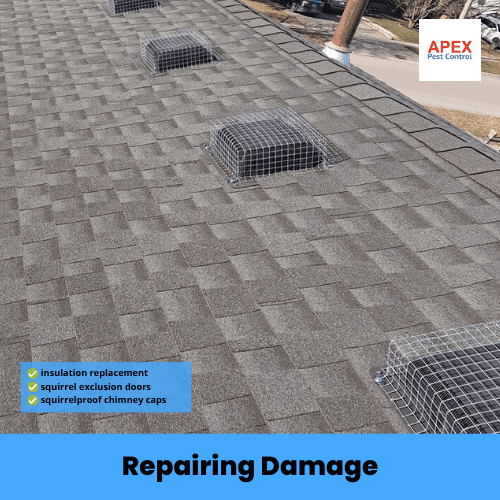
Structural Fixes
Seal holes with galvanised mesh or steel flashing.
Insulation Replacement
Swap soiled fibreglass for fire-retardant mineral wool.
Wiring Inspection
Electricians check for gnawed cables.
Expert Collaboration
Roofers and pest control specialists streamline repairs.
Preventing Future Infestations
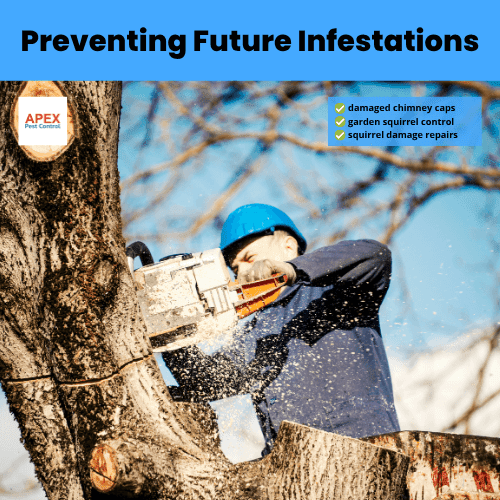
Trim Trees
Cut branches 2 metres from roofs.
Secure Openings
Install steel chimney caps, 6mm mesh vents.
Remove Food
Use squirrel-proof feeders, secure bins, and enclose compost.
Inspect Regularly
Check soffits and vents quarterly.
Squirrel Nest Removal Costs in the UK
| Service | Cost Range (£) |
|---|---|
| Inspection | £50–£140 |
| Nest Removal | £150–£400 |
| Exclusion/Proofing | £100–£250 |
| Structural Repairs | £200–£600 |
Factors: Traps (£20–£40), PPE (£40), materials (£50–£100), cleaning (£30). DIY costs £150–£250 but risks incomplete fixes. Insurance rarely covers pest removal; landlords typically handle rental properties.
Apex Pest Control: South Yorkshire Experts
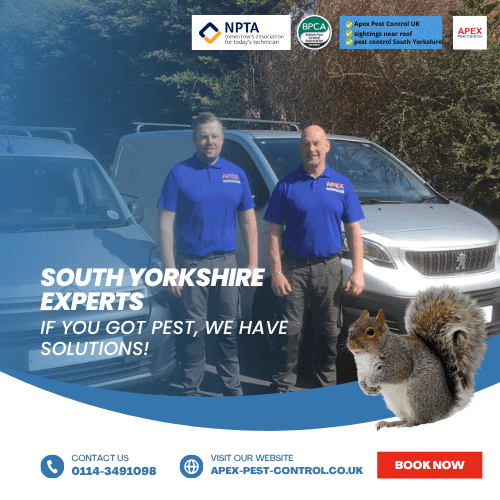
Squirrel nests threaten your property and local wildlife. Apex Pest Control in South Yorkshire delivers humane, UK-compliant squirrel nest removal. Our licensed team identifies dreys, removes them safely, and protects your home against future invasions. Contact Apex today for a free inspection and quote.
FAQs: Squirrel Nest Removal
How do I spot a squirrel nest?
Squirrel nests, also called dreys, are usually made of leaves, twigs, and insulation. In homes, grey squirrels (Sciurus carolinensis) often build nests in lofts, wall cavities, or roof voids.
Common signs include daytime scratching or scampering sounds, chewed wood or electrical cables, droppings near insulation, and twig or leaf piles in corners or under eaves. You may also spot entry points on fascia boards or roof tiles. Regular roof space inspections help identify early infestations.
Is squirrel nest removal a fire risk?
Yes. Squirrels chew through electrical wiring, often causing short circuits or exposed cables, which are a major fire hazard. In the UK, faulty electrics are a leading cause of domestic fires. Nesting materials are also flammable, especially when placed near light fittings or junction boxes. A professional pest control technician can safely remove nests and check for rodent-related electrical damage, reducing fire risk on your property.
Can I remove nests myself?
DIY squirrel nest removal is risky. Grey squirrels are invasive and classified under Schedule 9 of the Wildlife and Countryside Act 1981, which means it’s illegal to release them once trapped. Improper removal may leave behind young squirrels or contaminated nesting materials. Disturbing loft insulation or roof voids without PPE can expose you to health hazards.
For legal and safe removal, it’s best to use a BPCA-certified pest control service.
What diseases come from squirrel nests?
Squirrel nests can harbour disease-causing pathogens. Their droppings and urine may contain Salmonella, leptospirosis (Weil’s disease), and tularaemia, all of which pose risks to humans, especially through contact or airborne particles during cleaning. Nests also attract parasites such as fleas, lice, and ticks, which can spread Lyme disease. Professional pest control ensures safe removal and biohazard cleaning of contaminated loft or attic areas.
How do I prevent squirrel nests?
Prevention involves cutting back tree branches near rooflines, sealing entry points like vents, soffits, and fascia boards, and installing rodent-proof mesh over openings. Remove food sources like bird feeders or accessible bins.
Regularly inspect loft spaces, roof tiles, and eaves for signs of gnawing or nesting. Working with a pest control company can provide proofing services and advice on long-term squirrel deterrents.
Are grey squirrels protected?
No. Grey squirrels are a non-native invasive species in the UK and are not protected by law. It is illegal to release a grey squirrel after capture due to their impact on red squirrels (Sciurus vulgaris) and damage to UK woodland ecosystems. Only red squirrels are protected under the Wildlife and Countryside Act 1981. Pest control professionals must follow DEFRA guidelines when dealing with squirrel removal.

Tony Johnson, Founder & Lead Technician at Apex Pest Control, is a BPCA and NPTA accredited pest management expert with over 35 years’ hands-on experience. Tony specialises in Integrated Pest Management and ensures all services comply with UK pest legislation, including the Wildlife and Countryside Act 1981 and COSHH Regulations 2002. His commitment to continual learning and adapting to industry best practices means clients receive effective, safe solutions for pests affecting homes and businesses across South Yorkshire. Tony’s dedication to professional standards, ethical treatment methods, and local expertise has made him a trusted partner for pest control and prevention.
-
BPCA & NPTA accredited | CHAS certified
-
Committed to UK pest law compliance & safety
-
Focused on effective, ethical pest management for South Yorkshire
